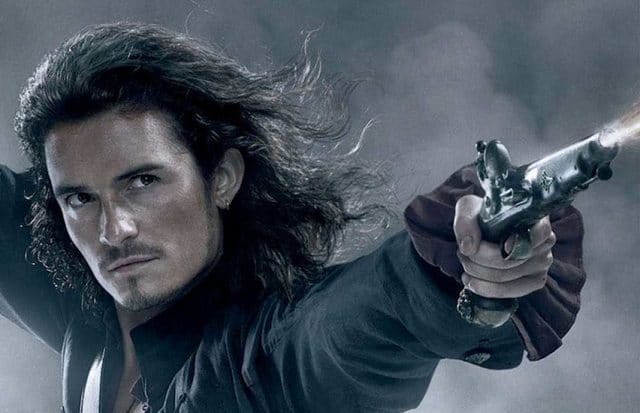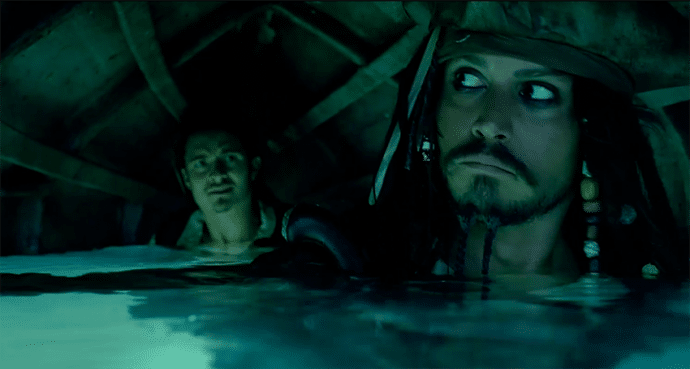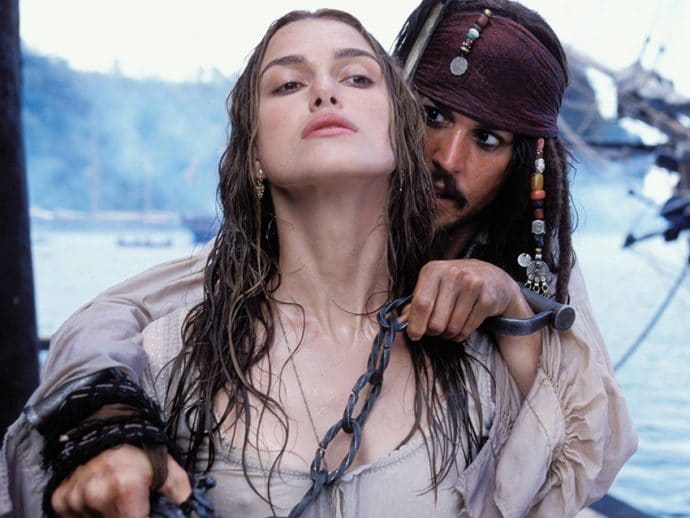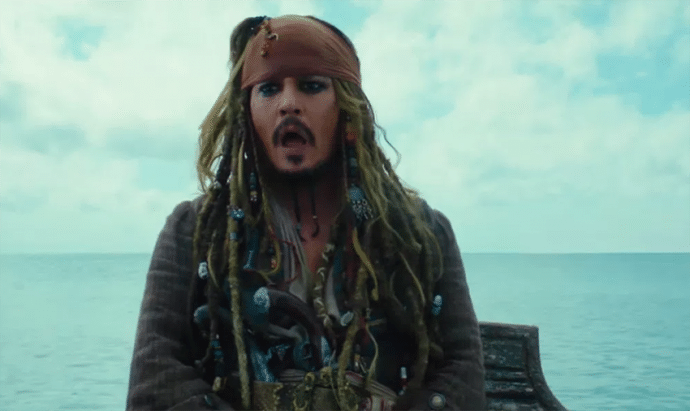
From deadly cross-dressing pirates having a lesbian-affair to booty, rituals and same-sex civil unions
The lesbian and gay pirates of the 17th century lived a strangely egalitarian life, with health insurance and even same-sex civil partnerships.
Piracy was a world apart, and one where homosexual couples may have been the norm, not the exception.
So to celebrate Talk Like A Pirate Day (19 September) here’s our queer history of piracy.
‘They never engaged in combat without embracing each other’
Same-sex action and the sea have long gone together.
Captains on navy and merchant ships must have accepted, if not engaged in, gay sex. It may even have been useful to them, reducing tensions and resentment and increasing the bond between men.
But technically it was illegal in many navies. Britain’s Royal Navy punished ‘sodomy’ or ‘buggery’ with lashes and even hanging.
Pirates often recruited their crews from the merchant and military ships they attacked, where sailors would already be having sex with each other.
And piracy offered a release from sexual restrictions alongside society’s other rules. Pirates consciously separated themselves from the rest of society. Some engaged in salt-water baptisms, gave themselves new names or toasted each other with seawater to mark their new life together.
And they embraced the all male world they joined.
One contemporary French historian wrote: ‘They never engaged in combat without embracing each other as a sign of reconciliation. At such times one might see them thumping their chests, as if they wanted to arouse some remorse in their hearts, something they had become scarcely capable of.’
The birth of the gay buccaneers
Most of our modern pirate myths stem from the Golden Age of Piracy, from the 1650s to the 1730s. This period was the inspiration for the Disney Pirates of the Caribbean film franchise.
It was born on the island of Hispaniola (which is nowadays Haiti and the Dominican Republic) in the Caribbean.
By 1605, Spain had abandoned its colonies in the impoverished north of the island. So runaway slaves, mutinous soldiers and sailors, almost anyone who had a reason to hide, could find safe haven there.
Many of them were protestants, either French Huguenots or English, and therefore fiercely opposed to the Catholic Spanish. Together, they formed a society which they dubbed the Brethren of the Coast.
Initially they hunted pigs and cattle, which they smoked over a wooden barbecue called ‘boucan’. That earned them the name ‘buccaneers’.
It was an almost entirely male society, so they lived in same-sex couples. Two men would disappear into the tropical forests for between six months and two years. When they emerged, they would be dressed in animal skins and covered in blood. Then they would sell smoked meats and hides to passing ships.
They may have turned to piracy to subsidise this meagre income. But the Spanish tried to wipe out not only the buccaneers but the animals they hunted. And this just made them more dependent on piracy.
Eventually, the Spanish persecution forced the buccaneers to move to the smaller island of Tortuga, off the north coast of Hispaniola. This was more defensible but had even fewer natural resources. So piracy became their main source of income.
Prostitute trouble on Tortuga
Tortuga was split between French and English colonies. That played into the buccaneers hands. The French, English and Dutch governments all wanted to break the Spanish monopoly of trade with the New World. So they either turned a blind eye to anti-Spanish piracy or even encouraged it.
State-sponsored piracy was nothing new. In fact, there is a long history of privateers. This is when a government grants people the right to attack merchant ships from another country.
The buccaneers did cause them one problem though. There were far too many men on this island and too few women. Tortuga was obviously deeply homosocial and probably openly homosexual.
The authorities had a plan for this. French governor Jean Le Vasseur apparently arranged for up to 1,650 female prostitutes and petty criminals to be shipped from Paris to the island.
Brutal sexism was at play. Le Vasseur believed the women would be a civilising influence. But he treated them little better than cattle – selling the ‘girls’ off to the highest bidder at auctions.
And it didn’t wash with the gay pirates. The same-sex couples were established by now, so they shared everything. And one woman between two was plenty. If one married, they simply became bisexual buccaneers in three-way relationships.
Pirates had gay civil unions and health insurance
Captain Morgan is now most famous for being the face on a bottle of rum. But the real Captain Henry Morgan was a privateer – a state-sponsored pirate. And before he attacked Panama in the 1670s, he drew up an amazing contract for his crew. If they lost a hand or foot in the battle, they would get 600 pieces of eight compensation. Both legs were worth 1,800 pieces of eight, 200 for one eye and 2,000 if they became totally blind.
But they didn’t just have health insurance. A form of same-sex civil unions, called matelotage, was also common.
Buccaneer Alexander Exquemelin wrote: ‘It is the general and solemn custom amongst them all to seek out… a comrade or companion, whom we may call partner… with whom they join the whole stock of what they possess.’
Your partner was called a ‘matelot’, which can also be translated as bunkmate. It’s possible the relationships started with one man selling their services to another, to satisfy debts, get food or for protection.
But it went deeper than that. If one matelot died, his partner inherited his property and share of the booty. In some cases, partners took punishment on each other’s behalf. In battle, they fought as a team and died together.
It appears the partnership was often, if not always, sexual.
Pirates respected matelotage enough that they wouldn’t interfere with the relationships.
The contemporary writer Captain Johnson, who may be the same person as Daniel Defoe, records the depth of these pairings. He says one pirate turned privateer drowned rather than abandon his closest friend on a sinking vessel.
Cross-dressing women pirates
A small number of women also became pirates. Mary Read and Anne Bonny are the most famous.
Both had a clear masculine side. Mary had gone by the name of Mark since childhood. It doesn’t appear that ‘she’ identified as ‘he’ – a trans guy – but there are some reports she preferred the role of a young man.
Anne’s father had dressed her as a boy and called her Andy. That may have been to disguise her, as he had fled his wife’s family. She had a fierce temper and, aged 13, she allegedly stabbed a servant girl with a table knife.
Read dressed as a man to get work at sea. But pirates took a ship she was on and forced her to join them. Meanwhile Bonny had traveled to the Bahamas and started mingling with pirates in the local taverns. There Bonny met pirate Captain John ‘Calico Jack’ Rackham and became his lover. Shortly after, Read joined them too.
Initially Bonny and Read each assumed the other was a man. But Bonny eventually told Read she was a woman and attracted to her. Read then revealed she was also a woman. That is when they probably started to have a sexual relationship.
Rackham was jealous of Read, as he thought Read was a man with designs on his lover, Bonny. But Bonny reassured him by explaining Read was a woman.
Together the three stole a ship from Nassau, the capital of the Bahamas. They recruited a crew and captured many ships around Jamaica, amassing plenty of treasure.
Bonny and Read’s brave last stand
Rackham’s crew were having a rum party on board when a pirate hunter cornered them and stormed their ship on 15 November 1720.
Rackham’s men may have been too drunk to fight. That left Bonny and Read and one other crew member to take on the boarding party. Read allegedly shot at the other pirates when they refused to defend themselves.
Eventually the pirate hunters overwhelmed them. Rackham was sentenced to death and Bonny’s last words to him were: ‘Had you fought like a man, you need not have been hang’d like a dog.’
Bonny and Read, however, escaped immediate execution as they were both pregnant. Read died of a fever in prison. Bonny may have survived as she disappears from history.
The Dread Pirate Roberts
Captain Bartholomew Roberts is the most successful pirate of the Golden Age of Piracy, taking over 400 vessels between 1719 and 1722.
He had been an officer on a merchant ship off the coast of Ghana when pirates seized the vessel and forced him to join them.
Initially he was a reluctant recruit. But the pirate captain, Howell Davis, soon realised Roberts was a great navigator and persuaded him. Piracy was an attractive alternative to the harsh conditions and poor wages on a merchant ship. Roberts decided: ‘A merry life and a short one shall be my motto.’
Within six weeks of him joining, Davis was dead and the crew elected Roberts to be their captain. He was swiftly successful, capturing one ship with 40,000 gold moidores – worth about $10million or €8.3million – not bad for a day’s work.
Roberts avoided the company of women on shore and preferred tea to rum. His crew may have found the former less surprising than the latter.
He also introduced a Pirates’ Code, an idea that would become very much part of the pirate myth.
Clause six of this banned women – and boys – from ship. Presumably both would have created jealousy and started fights. It reads:
‘No boy or woman to be allowed amongst them. If any man were to be found seducing any of the latter sex, and carried her to sea, disguised, he was to suffer death.’
‘We will blow up and go to hell together’
Roberts had a famous affair was with a surgeon called George Wilson who volunteered to join the pirates when they took his ship.
Wilson was accidentally left on shore for five months or perhaps deserted. But eventually Roberts took another ship he was on board. Both men were excited by this meeting. Witnesses later said Wilson was ‘very alert and cheerful’ to see Roberts. And he borrowed ‘a clean shirt and drawers’ to look smarter for the pirate captain.
Once on Roberts’ ship, Wilson got himself elected senior surgeon and became intimate with the captain. One account says: ‘They two [used] often to say that if they should meet with any of the Turnip Man’s ships [English King George I] they would blow up and go to hell together.’
That’s not what happened. The British Royal Navy cornered Roberts off the coast of Gabon in West Africa. He was shot in battle. Wilson apparently bargained with the authorities and escaped execution.
And if you think of the Royal Navy as the responsible law-keepers in the situation, you’d be wrong. They captured 272 of Roberts’ pirates. They hanged 52 of them and sold the 65 black crew into slavery.
And yet more gay pirates
There were plenty of other same-sex couples in the pirate world. One particularly famous pair are Captain Robert Culliford and John Swann. Swann was referred to as ‘a great consort of Culliford’s, who lives with him’.
The pair landed in trouble when they attacked Mangrol in Gujarat, India in 1692. They robbed and abused the population but were captured by the Gujaratis and jailed for four years.
And there’s other evidence for homosexuality among pirates too.
One contemporary writer said homosexuality was common in the French Antilles, modern day Guadeloupe and Martinique:
‘There are two types of families in the islands. The first consist of married persons and the others of boys who live together.’
Gay pirates forever
The history is rarely told. But the romanticized idea of gay pirates continues to inspire us.
Johnny Depp indicated he drew on these stories in playing Jack Sparrow in Pirates of the Caribbean.
He says one of the movie’s executives asked him ‘What the fuck are you doing?’ playing Captain Jack as gay. He replied: ‘All my characters are gay.’
But perhaps the most touching tribute is this 2010 song from Cosmo Jarvis. The singer imagines a doomed shipboard love affair with a pirate called ‘Sebastian’.
Watch it here:












